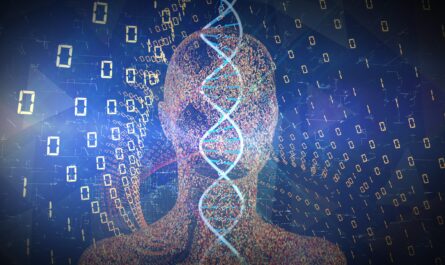Researchers at Boston University Chobanian & Avedisian School of Medicine have made significant progress in improving the identification of glycopeptides through mass spectrometry analysis. Glycosylation, the attachment of carbohydrates to a protein backbone, plays a vital role in protein structure, function, and stability. Proteins that undergo glycosylation are known as glycoproteins, with N-glycosylation and O-glycosylation being the most common types.
The study aimed to enhance current methods of identifying glycopeptides and discovered that conventional mass spectrometry techniques were effective in identifying peptides with one glycan. However, an additional step is necessary to identify peptides with two or more glycans.
Identifying peptides with multiple glycans is essential in discerning different glycoforms of a protein and understanding its biological function and disease implications. The challenge lies in generating peptides that carry only one glycan due to the potential for a single protein to carry numerous glycans.
Lack of knowledge regarding glycoproteins and how they change during development and diseases has hindered the discovery of potential therapeutic applications. Manveen K. Sethi, Ph.D., the corresponding author and research assistant professor of biochemistry & cell biology, believes that a more comprehensive understanding of how glycosylation impacts diseases, particularly site-specific alterations, could lead to novel therapeutic targets for currently untreatable conditions.
Improved technology for confidently identifying densely glycosylated peptides would enable the differentiation between healthy and diseased states based on site-specific glycosylation patterns. This would facilitate the use of glycoproteins as markers and therapeutic targets for various diseases, according to Sethi.
The researchers conducted their study using four standard proteins and employed different enzymatic digestion protocols before mass spectrometry analysis. They compared a conventional higher-energy collisional dissociation (HCD) method with a newer method called electron transfer/higher-energy collisional dissociation (EThcD). The objective was to determine the number of glycopeptides identified using various digestion protocols and mass spectrometry methods.
The results indicated that HCD is sufficient for identifying glycopeptides. However, EThcD is often necessary to detect glycans, particularly in the case of peptides carrying multiple glycans.
This research contributes to the advancement of mass spectrometry techniques for glycopeptide identification, leading to a more comprehensive understanding of glycosylation’s role in disease pathology. The ability to differentiate glycoforms and identify site-specific alterations could unlock new therapeutic avenues for diseases currently lacking effective treatment options.
*Note:
1. Source: Coherent Market Insights, Public sources, Desk research
2. We have leveraged AI tools to mine information and compile it



